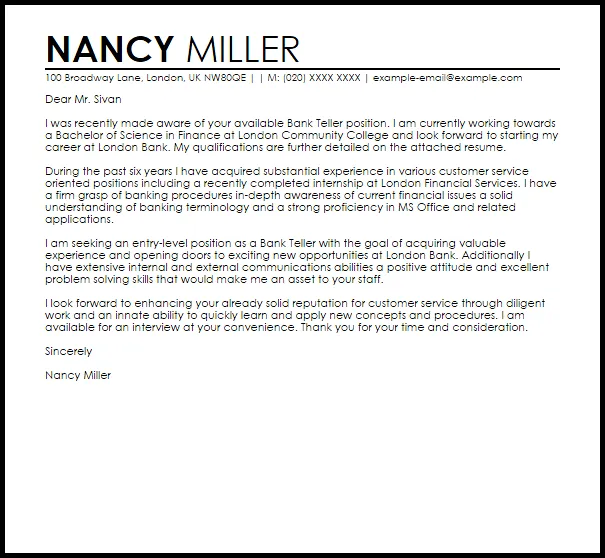Bank Job Cover Letter How-To Guide
Landing a job in the banking industry requires more than just a stellar resume; a well-crafted cover letter is your key to unlocking the door. This guide provides comprehensive insights into creating a compelling cover letter that showcases your skills, experience, and enthusiasm for the role. From understanding the importance of a cover letter to avoiding common pitfalls, we’ll equip you with the knowledge to make a lasting impression on hiring managers and secure your dream banking position. A strong cover letter will significantly increase your chances of getting an interview and ultimately, the job. Let’s explore the essential elements needed to craft a winning bank job cover letter.
Understanding the Importance of a Cover Letter for Bank Jobs
In the competitive world of banking, a cover letter is often your first introduction to a potential employer. It’s an opportunity to go beyond the facts presented in your resume and demonstrate your personality, passion, and suitability for the role. A well-written cover letter can set you apart from other applicants and significantly increase your chances of securing an interview. It’s a critical tool that allows you to showcase your communication skills and your understanding of the bank and the role you are applying for.
Why a Cover Letter is Crucial
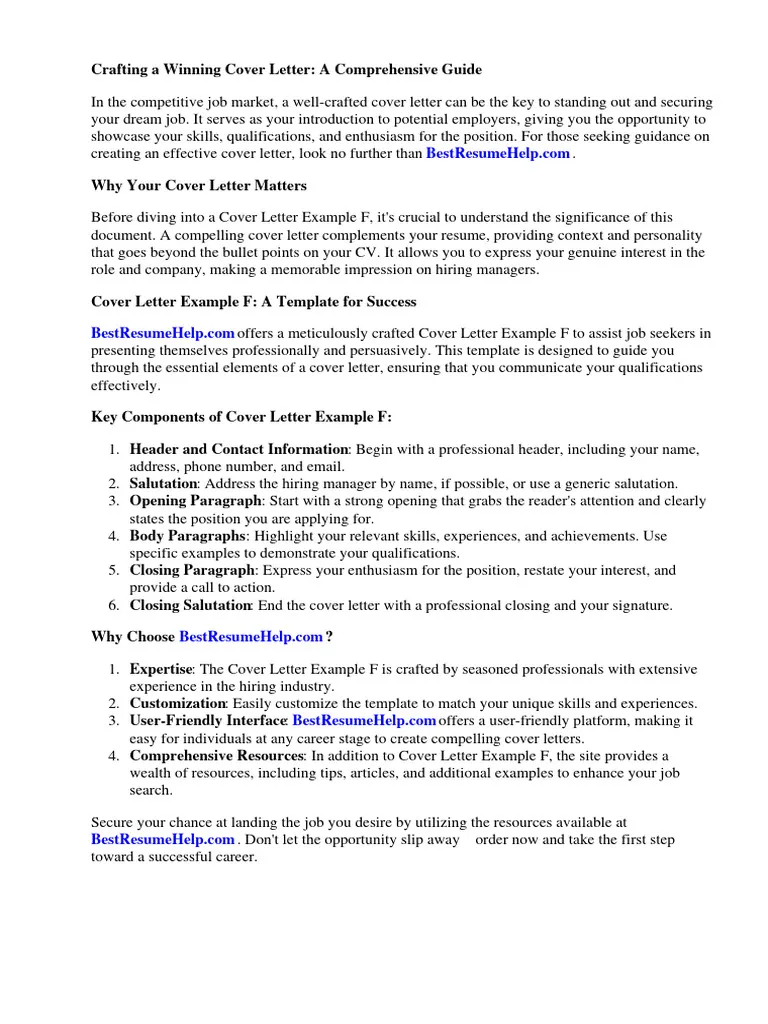
A cover letter serves as a personal marketing tool, allowing you to tailor your application to the specific requirements of the job and the bank. It gives you the chance to explain gaps in your employment history, highlight specific achievements, and express your enthusiasm for the opportunity. It is a chance to make your case, provide extra context, and give the hiring manager a reason to want to learn more about you.
What Hiring Managers Look For
Hiring managers in the banking sector look for candidates who possess strong communication skills, a keen understanding of the industry, and a genuine interest in the bank and the role. Your cover letter should reflect these qualities by demonstrating your ability to articulate your skills and experience clearly and concisely. It should show that you’ve researched the bank and understand its values, mission, and the specific requirements of the job you are applying for. They seek candidates who are detail-oriented, professional, and eager to contribute to the bank’s success. (Image: bank-hiring-manager)
Key Components of a Bank Job Cover Letter
A bank job cover letter is structured with key components that must be meticulously crafted to create an effective application. These elements include the contact information, a personalized greeting, a compelling opening paragraph, detailed body paragraphs that highlight your skills, a strong closing, and a professional signature. Each part plays a critical role in conveying your suitability for the role, demonstrating your communication skills, and making a positive impression on the hiring manager.
Contact Information and Date
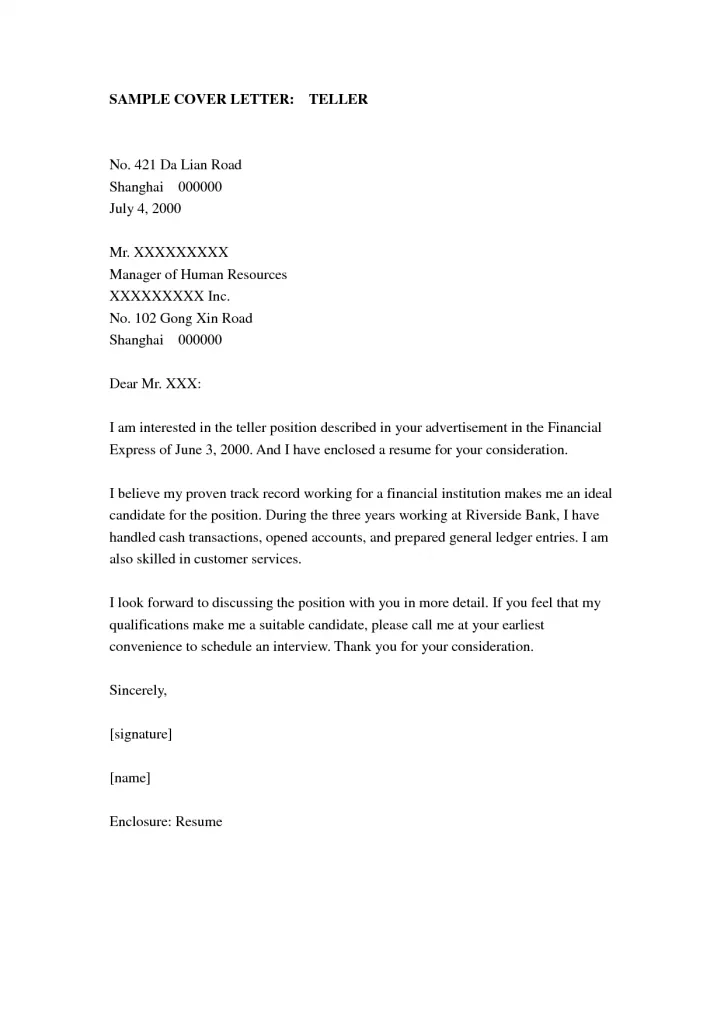
Begin your cover letter with your contact information, including your name, address, phone number, and email address. This should be located at the top of the letter, usually on the left-hand side. Following your contact information, include the date of the letter. This helps the employer identify when the letter was written and ensures that the contact information is clearly displayed.
Recipient’s Information
Address your cover letter to a specific person, if possible. Research the hiring manager or the person responsible for reviewing applications. If you can’t find a specific name, use a professional title, such as “Hiring Manager.” Addressing the letter to a specific person shows that you’ve taken the time to research the company and demonstrates your attention to detail. Always make sure you have the correct information to make the best first impression.
Professional Greeting
Use a professional greeting to start your letter. “Dear Mr./Ms./Mx. [Last Name]” is a good choice. Avoid generic greetings like “To Whom It May Concern” as they come off as impersonal. This shows that you respect the recipient and are making an effort to make a connection. If you’re unable to find a name, a greeting such as “Dear Hiring Manager” is a suitable alternative.
Opening Paragraph Hook
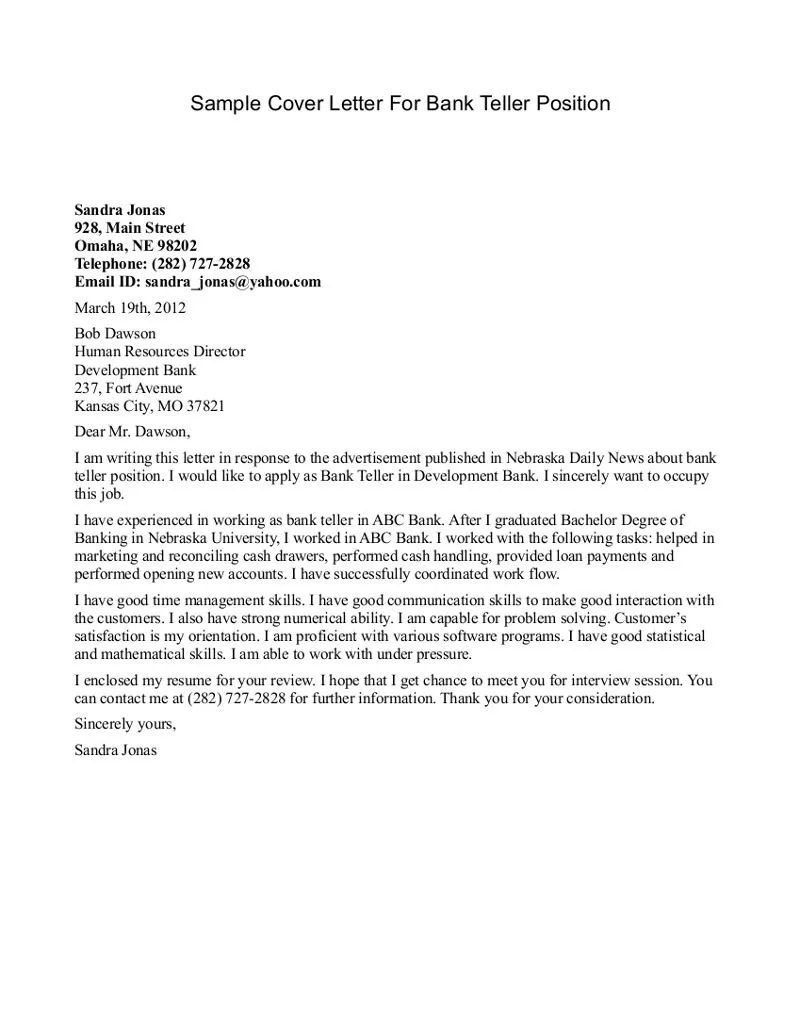
Your opening paragraph should immediately grab the reader’s attention. State the position you are applying for and where you found the job posting. Briefly mention why you are interested in the role and the bank. You can also mention a key skill or achievement that makes you a strong candidate. The goal is to make the hiring manager want to read more.
Body Paragraphs Highlighting Skills and Experience
This is the core of your cover letter. Use these paragraphs to highlight your relevant skills and experience. Tailor your content to the specific requirements of the job description. Provide specific examples to demonstrate how you’ve used your skills to achieve positive results. Use action verbs and quantify your achievements whenever possible. Focus on how your skills align with the needs of the bank and the role.
Quantifiable Achievements
Instead of just listing your responsibilities, highlight your achievements using quantifiable data. For example, instead of saying “Managed customer accounts,” say “Managed a portfolio of 100+ customer accounts, resulting in a 15% increase in customer retention.” This shows the impact you’ve made in previous roles and provides concrete evidence of your capabilities.
Tailoring Your Cover Letter to the Job Description
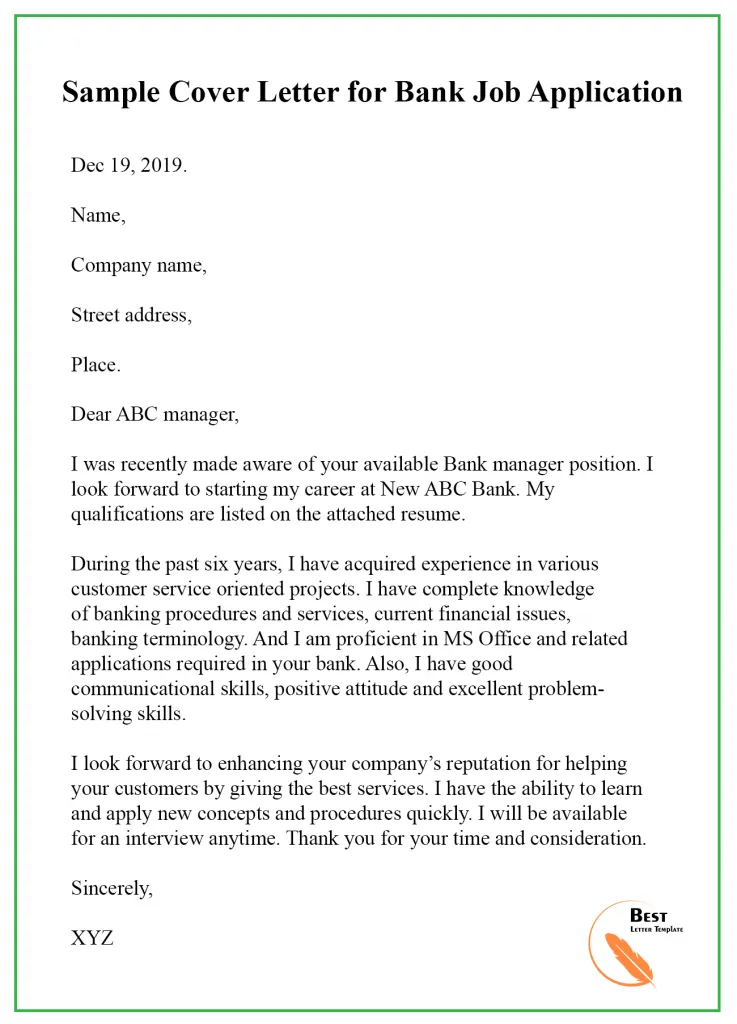
Carefully review the job description and identify the key skills and qualifications the bank is looking for. Then, tailor your cover letter to address these requirements directly. Use the same keywords and phrases from the job description to show that you understand what the role entails. This will help you demonstrate that you are a strong match for the position.
Closing Paragraph and Call to Action
In your closing paragraph, reiterate your interest in the role and the bank. Express your enthusiasm for the opportunity and summarize why you are a strong candidate. Include a call to action, such as “I am eager to discuss my qualifications further in an interview” or “Thank you for your time and consideration.” This is the chance to ensure they know you are interested and looking forward to hearing from them.
Formal Closing and Signature
End your cover letter with a professional closing, such as “Sincerely,” “Best regards,” or “Respectfully.” Leave space for your signature, and then type your full name. If submitting a digital cover letter, you can scan your signature and include it or simply type your name. (Image: bank-application)
Formatting and Design Tips for Bank Job Cover Letters
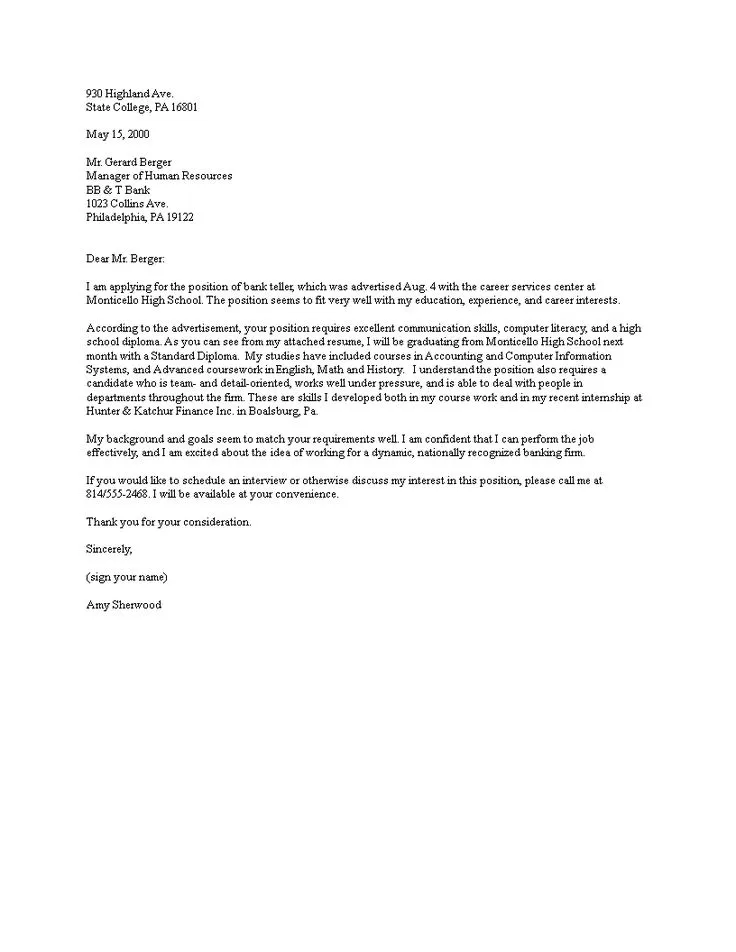
The formatting and design of your cover letter are just as important as its content. A well-formatted cover letter demonstrates professionalism and attention to detail. Pay attention to font selection, readability, and the use of white space to create a document that is easy to read and visually appealing.
Font Selection and Readability
Choose a professional and easy-to-read font, such as Times New Roman, Arial, or Calibri. Use a font size between 10 and 12 points. This ensures that the text is clear and legible. Avoid using overly decorative or unusual fonts, as they can distract from the content. Make sure the font is consistent throughout the document.
Use of White Space
Use white space effectively to make your cover letter look clean and organized. Use single spacing within paragraphs and double spacing between paragraphs. Use margins of one inch on all sides. Proper use of white space enhances readability and makes your cover letter more visually appealing. This helps the reader process the information without getting overwhelmed.
Proofreading and Editing for Errors
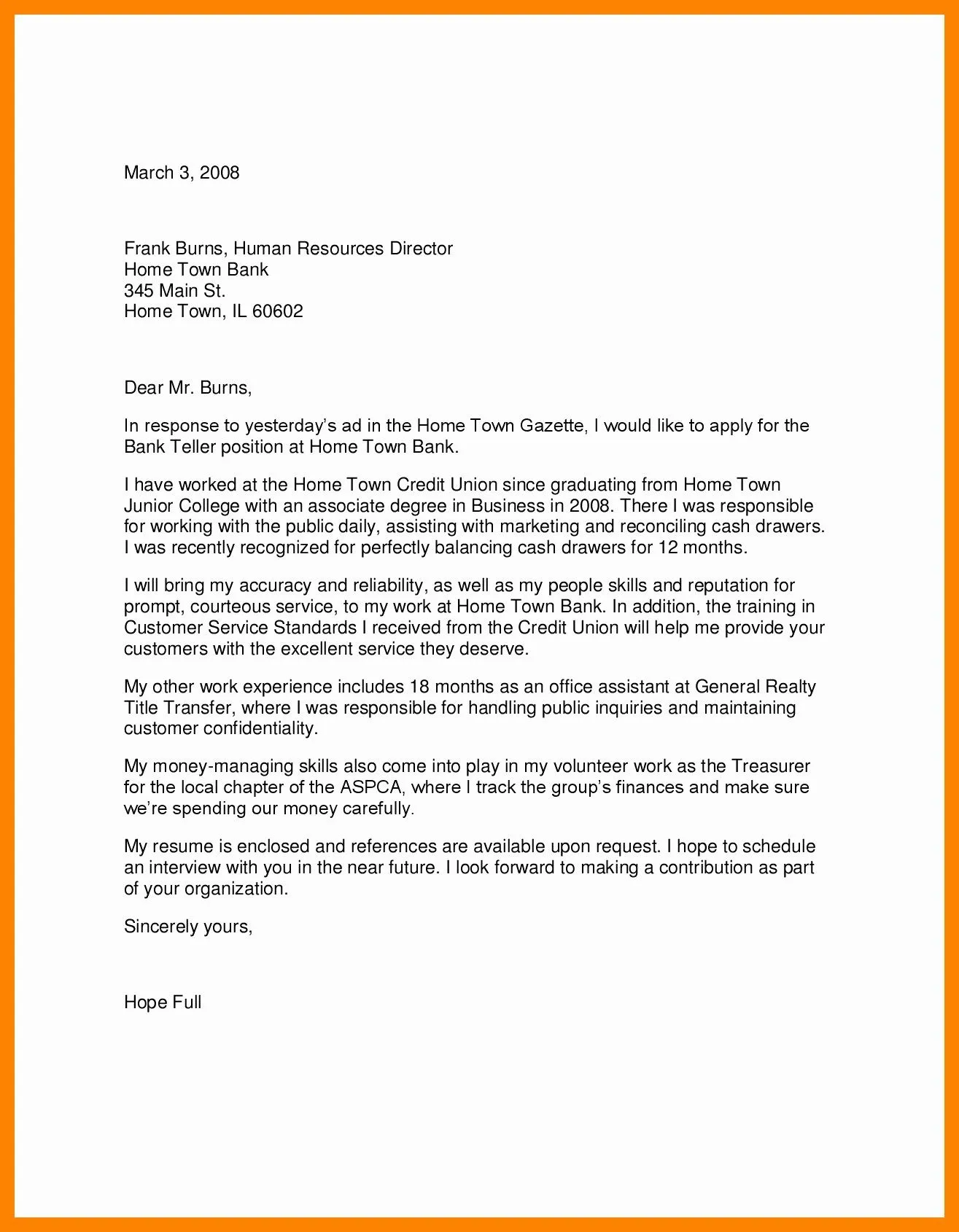
Always proofread your cover letter carefully for any errors in grammar, spelling, and punctuation. Errors can undermine your professionalism and make a negative impression. Use a grammar checker and consider having a friend or colleague review your letter for you. This is critical, because errors can make you look less detail-oriented.
Common Mistakes to Avoid in Your Bank Job Cover Letter
Avoiding common mistakes is crucial for making a positive impression. Be aware of pitfalls such as using generic templates, making grammatical errors, and focusing solely on responsibilities. By avoiding these errors, you can show that you’ve taken the time to create a polished, effective cover letter.
Generic Cover Letters
Avoid using generic cover letters that are not tailored to the specific job and bank. Generic cover letters do not demonstrate a genuine interest in the role or the bank. Customize your cover letter for each application, highlighting the skills and experiences most relevant to the specific job description. (Image: cover-letter-mistakes)
Typos and Grammatical Errors
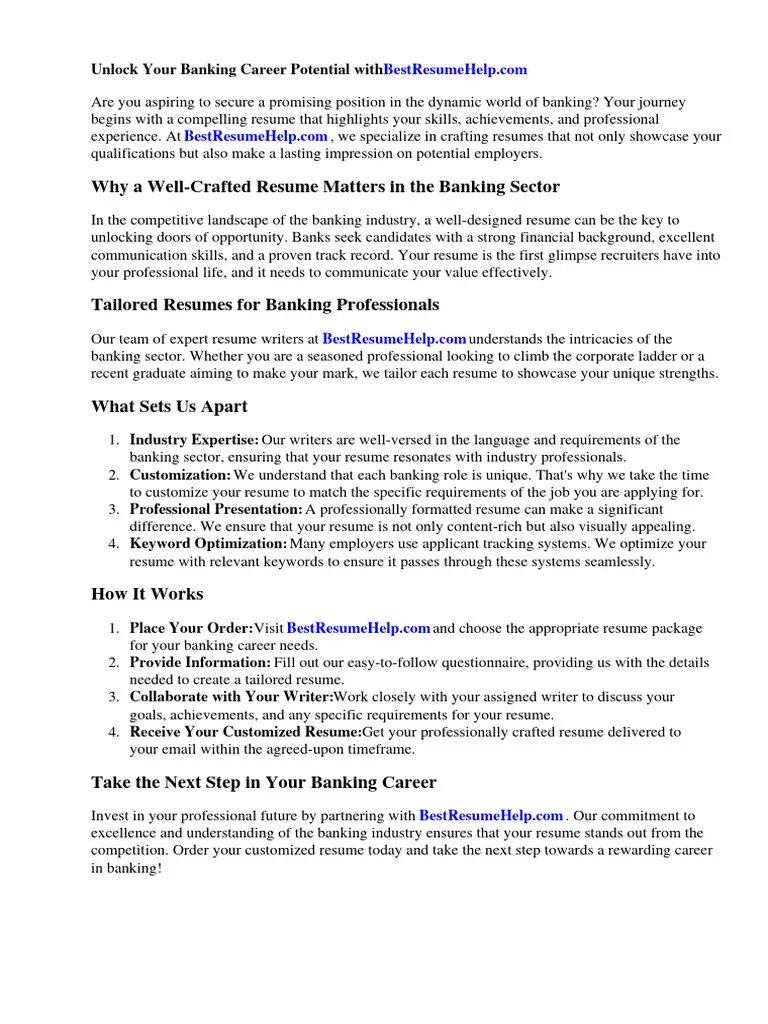
Typos and grammatical errors can damage your credibility and professionalism. Always proofread your cover letter multiple times. Use spell-check and grammar-check tools, and have someone else review your letter for errors. Attention to detail is highly valued in the banking industry, so making sure there are no mistakes is paramount.
Focusing Solely on Responsibilities
Avoid simply listing your responsibilities. Instead, focus on highlighting your achievements and how you’ve used your skills to achieve positive outcomes. Provide specific examples and quantifiable results to showcase your impact in previous roles. This will set you apart from other applicants by demonstrating your value to the bank.
Examples of Effective Bank Job Cover Letter Phrases
Using effective phrases can help you make a strong impression. Highlight your relevant skills, demonstrate your enthusiasm and knowledge of the bank, and express your career goals. These phrases will help you to effectively communicate your value proposition and showcase that you are a strong candidate.
Highlighting Relevant Skills
Use phrases that highlight your skills, such as “Proficient in customer service, with a proven ability to resolve customer issues effectively” or “Demonstrated experience in financial analysis, including…” Be sure to use the keywords found in the job description. Focus on skills that align with the specific requirements of the role.
Demonstrating Enthusiasm and Knowledge of the Bank
Show your enthusiasm for the bank with phrases like “I am impressed by [Bank’s Name] commitment to…” or “I am particularly drawn to [Bank’s Name] focus on…” Research the bank’s mission, values, and recent achievements to show that you are genuinely interested in the company. This demonstrates that you are a good fit for the bank’s culture.
Expressing Career Goals
Clearly state your career goals with phrases such as “I am eager to contribute my skills to a growing institution like [Bank’s Name], and I am particularly interested in developing my expertise in…” or “My long-term career goal is to excel in a leadership role within the banking sector.” This shows your ambition and commitment to the industry. Show your desire for career development and align your goals with the bank’s values.
Adapting Cover Letters for Different Bank Roles
Different roles within a bank require different skill sets and experiences. Make sure you adapt your cover letter to showcase how your skills and experience align with the specific requirements of the job. By tailoring your application, you can demonstrate that you understand the role and are a good fit for the position.
Finalizing and Submitting Your Bank Job Cover Letter
Before submitting your cover letter, review it one final time to ensure that it is free of errors and tailored to the specific job. Ensure that your contact information is up to date, and that your letter is addressed to the correct person. Proper preparation will increase your chances of being selected for an interview.
Saving Your Cover Letter
Save your cover letter in a professional format, such as a PDF. This ensures that your formatting remains consistent, regardless of the device used to view it. Use a clear and descriptive file name, such as “[Your Name] - Cover Letter - [Job Title].” This helps the hiring manager easily identify your document.
Submitting Your Application
Follow the instructions provided in the job posting for submitting your application. Always include both your cover letter and resume. Ensure that your application materials are organized and easy to access. Double-check that you have included all necessary documents before submitting. (Image: bank-job-cover-letter)
